This year both Navratri and Diwali were in the same month – in October which made even the joyous part of life quite hectic. For Navaratri, this year we did a simple and straight forward display on Story and Storytelling unlike the theater and drama of last year heaven kolu. For folks who are new to this blog and to this Indian festival, Navaratri is a festival of nine night with a lot of celebrations – food, decorations, music and dance and one of the rituals is Bommai kolu or arrangement of dolls (mud, POP, and wooden). You can find my previous posts on Navaratri here.
PS: Long picture heavy post ahead!! 😀
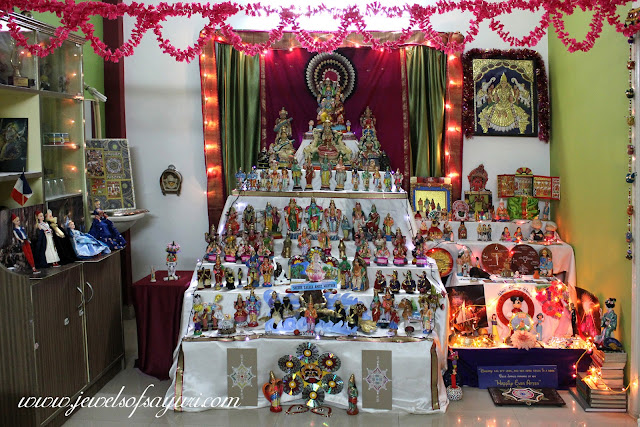
Hinduism has millions of stories in it, often in a “Story within a story” format – which made me wonder about the source of it all. Sama Veda, one of the four Vedas has two kinds of hymns in it – Graama gaya gana (songs of the village) and Aaranya Gana (songs of the forest). The songs sung in the forest later got transformed into folklore and songs of the village are became the source of some Upanishads. As these were often intangible, the common people couldn’t understand it. In order to spread its teaching far and wide, Stories were written with tangible and relate-able characters of Gods and kings called as Puranas. These Puranas teach us about rituals and religion. Itihasas or Maha Kavyas like Ramayana and Mahabharata teach us about dharma, connecting elements in one’s own self, and life with that of the Gods.
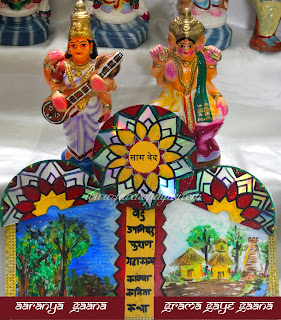
Inspired by the Maha kavya came the kavyas; examples are Kalidasa’s epics in sanskrit and Aim perum Kaapiyam (in Tamil) that serve as records of history, material culture, and society. We learn about how Gods or People look(ed) through stories; we can even learn an art or craft form through them. For example, the art of draping curtains with scallops was adapted from Greek tales by Indians. We understand that Lord Rama was greenish black in color while Lord Krishna was bluish black in color from Stories.
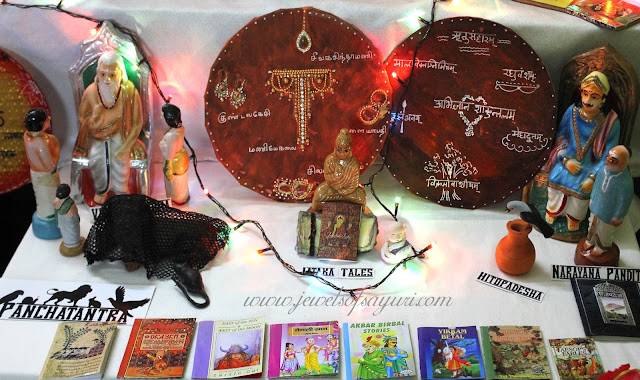
Panchatantra was scripted by Vishnu Sharma as a series of 87 animal tales to teach principles of Rajaneeti to the princes of Mayilapuri – Bahushakti, Ugrashakti, and Anantashakti. Jataka Tales a text division of Theravada Buddhism comprises of 547 poetic stories that impart values such as of self-sacrifice, morality, and honesty in disciples. Hitopadesha was composed by Narayana Pandit, under the patronage of king Dhavalachandra of Bengal, to gently advice.
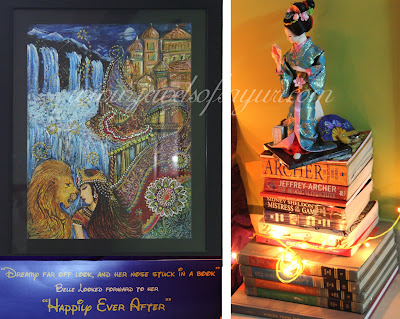
Reading stories of other lands enables us connect to other cultures and learn from them; as it opens up our imagination and makes us more creative. The story of French revolution not only informs us about the ideals of liberty and justice but also how fashion, design and art changed because of it. Famous collections like Aesop fables and Kalila o Demna are transmutated versions of Indian stories that illustrate universal values.

Storytelling
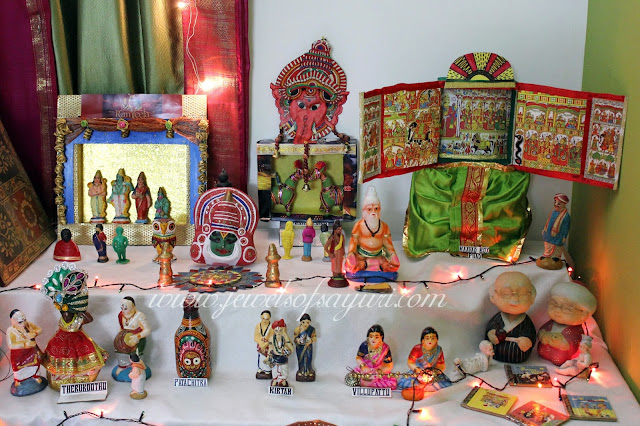
The frame by frame paintings of the Phad scrolls, the stackable Talapatachitras, or the innovative Kavad box have been long used by travelers to narrate stories and could have been the precursors to modern day cinema.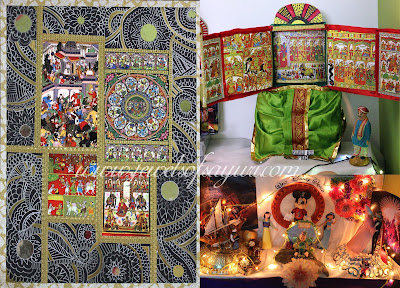
The master craft of storytelling is best chronicled through Disney movies and shows which have successfully adapted the violent and abusive Grimm tales to not just suit children but also capture their attention long after they mature into adults. The Storytellers at Disney, offer, not just a fantasy but a promise of a better tomorrow – of happily ever after through loving relationships. They give us a sense of wholeness, where the pieces of one’s life fit together and add up to something. This is the power of Storytelling.

But what about the Power of stories? The power of a story lies in its moral, the lesson that it tries to communicate and its relevance across centuries. To better illustrate the various layers of a story and it’s power we have showcased a well known yet complex story from Bhagavata Purana – that of Sheera Sagara Amrit manthan.
The story of Amrit Manthan
Once Lord Indra while riding on the elephant Airavata, comes across Sage Durvasa who gifts him a garland. Unthinkingly, Indra gives it to his elephant, which, irritated by the smell of the flowers throws it on the floor and tramples it. Enraged, Sage Durvasa curses all devas to be bereft of all strength, and wealth. Subsequently, Indra loses his power and wealth and approaches Brahma for help. He is told that he can get back wealth (Lakshmi) by tilling the earth or churning the ocean and that he must approach Lord Vishnu to be his mentor in this endeavor. Vishnu, advises Indra to churn the Parkadal (Milky way) using the Mt. Mandara as the churning rod and the snake Vasuki as the churning rope. The devas then form an unlikely alliance with the asuras to help them with the churning while offering them Amrit (nectar of immortality)as the reward. The asuras, wanting to lead, hold the head of the snake while the devas hold the tail and begin to churn. As the jagged mandara begins to sink. Vishnu, in the form of a turtle Kurma, supports the mountain on his back. Lord Brahma sits on top of the Mountain to provide balance.
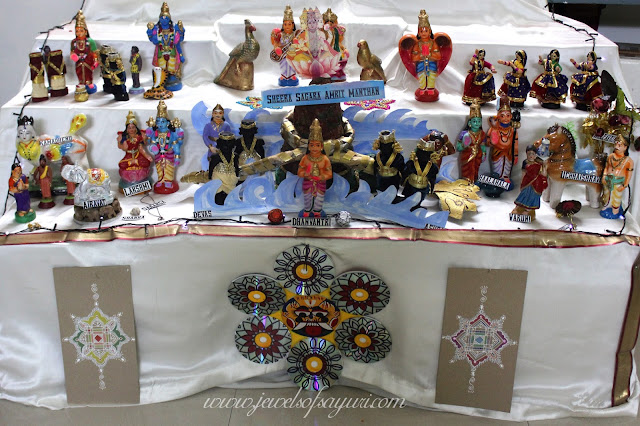
The Samudra Manthan process first releases the lethal poison Halahala, which is accepted by Lord Shiva to protect the universe. Shiva’s throat turns blue and he becomes the Neelakanta. Vishnu accepts Kaustuba, Saranga, and the Shanka. Kamadhenu is gifted to the sages, Uchhaishravas, the 7-headed horse is given to the asuras and Airavata goes back to Indra. Apsaras chose the demigods as their companions and Varuni accepts the demons. Chandra, the moon adorns Shiva’s head; the Parijat tree and Kalpavriksha are taken to Indraloka, an umbrella taken by Varuna, and the earrings given to Aditi. Lakshmi appears and accepts Vishnu as her eternal consort. Finally, Dhanvantari appears with Amrita – the nectar of immortality.

With the Amrita out, a quarrel breaks out between the devas and the asuras. Vishnu dressed as Mohini offers to distribute the amrita to both parties if they promised to behave. With the asuras are mesmerized by her beauty, she serves it only to the devas. Only the asura Svarabhanu who understands the ploy drinks the amrita. The sun and moon irked by this get Svarbhanu’s head severed by Vishnu. The split up asura is later transmuted into Rahu and Ketu using Sanjeevini Vidhya and becomes a part of the navagrahas. To this day it is said that he takes revenge on the Sun and the moon by the way of eclipses.
This is an eon old story filled chimeric creatures and powerful Gods, however, it holds important lessons that lead to success and wealth creation in the modern world.
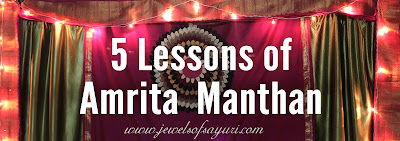
The Five contemporary Lessons of Amrita Manthan
2. The Importance of teamwork – To succeed in life one must form alliances with people we might not like – could be even colleagues or relatives we are not fond of. Yet we have to work professionally with them by following a give and take policy. Manthan means churning (symbolic of give and take) and it also means hard work, indicating that working hard as a team is crucial to success.
3. The importance of having a mentor – In this age, a good mentor’s advice can give one the competitive edge fast tracking them to success. Vishnu’s mentorship and the Devas unflinching obedience to him is what helps them win at every stage
4. Accepting failure and considering it as the stepping stone to success – If the churning had been stopped after the haalahala, amrit would have never been found. In the same way, if we let rejection or ill remarks break down our stride we will never bring a project to its completion. Only when we work on our mistakes and correct them the end product will
5. Keeping your eye on the prize – If your intent is clear then the universe will conspire to help you. The devas kept their eyes on the amrit while the asuras got distracted by the poison, by apsaras, varuni and in the end Mohini and that is why the Devas and not the asuras were rewarded with the amrit.
With that we come to the end of our Kolu on Story and Storytelling. our objective behind choosing this theme was to encourage people to read more (stories) and benefit from their lessons. I hope you enjoyed the display and the stories. We had also kept cards on why Kolu is kept and why we offer Thamboolam (betel leaf and nut, flower, fruits, kumkum, new fabric, etc) to the guests who come home which many enjoyed reading.
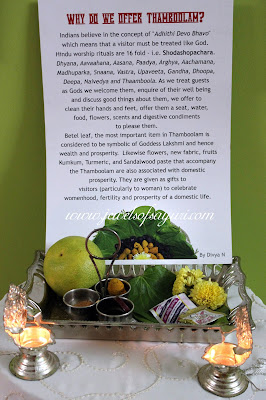
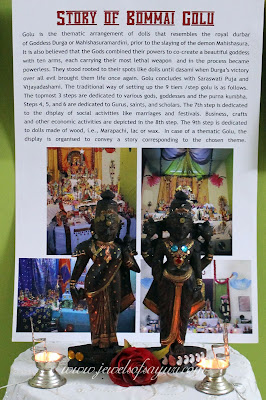
Unlike the previous years, this year my mom had to do most of the physical labour involved in setting up the display as I was too sick to even lift the dolls. But as I am quick in making props and coming up with new ideas I made everything that we needed in less than a week’s time. It was simpler than last year and more traditional but we ended up getting selected for prizes in two competitions conducted by Local weekly newspapers – Adyar Times and Hindu Downtown
Almost everyone who came home was surprised (shocked too) at the amount of research that went into the display but that was the easiest thing about this year’s kolu. I teach a new class called “Traditional folk media” this semester and this was all a minuscule part of my research and preparation for the subject. Not to brag but this is a small example of the amount of work, teachers put into their class preparation.
On that note, I am signing off. I hope you found it interesting
Cheers


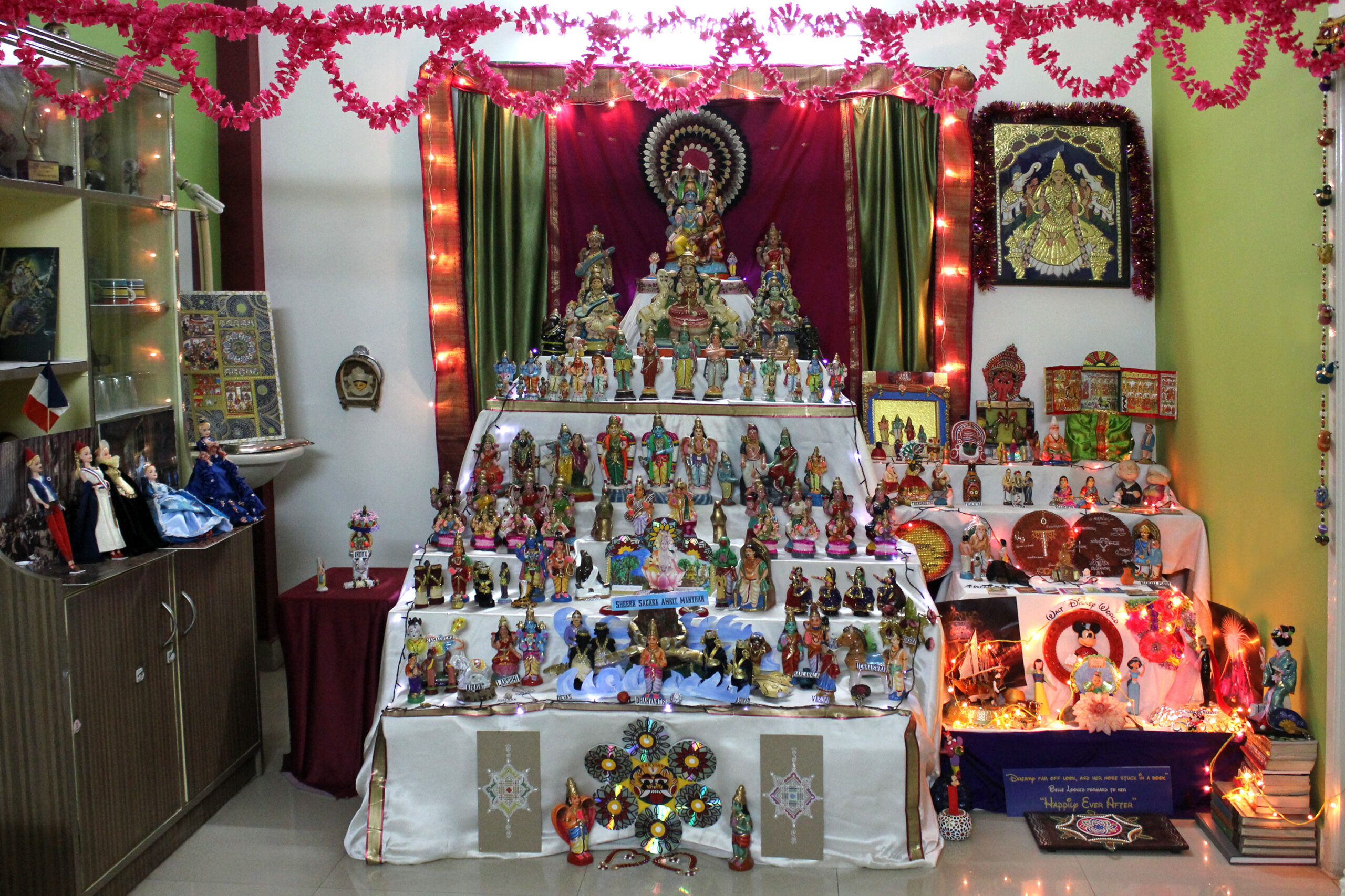
Leave a Reply